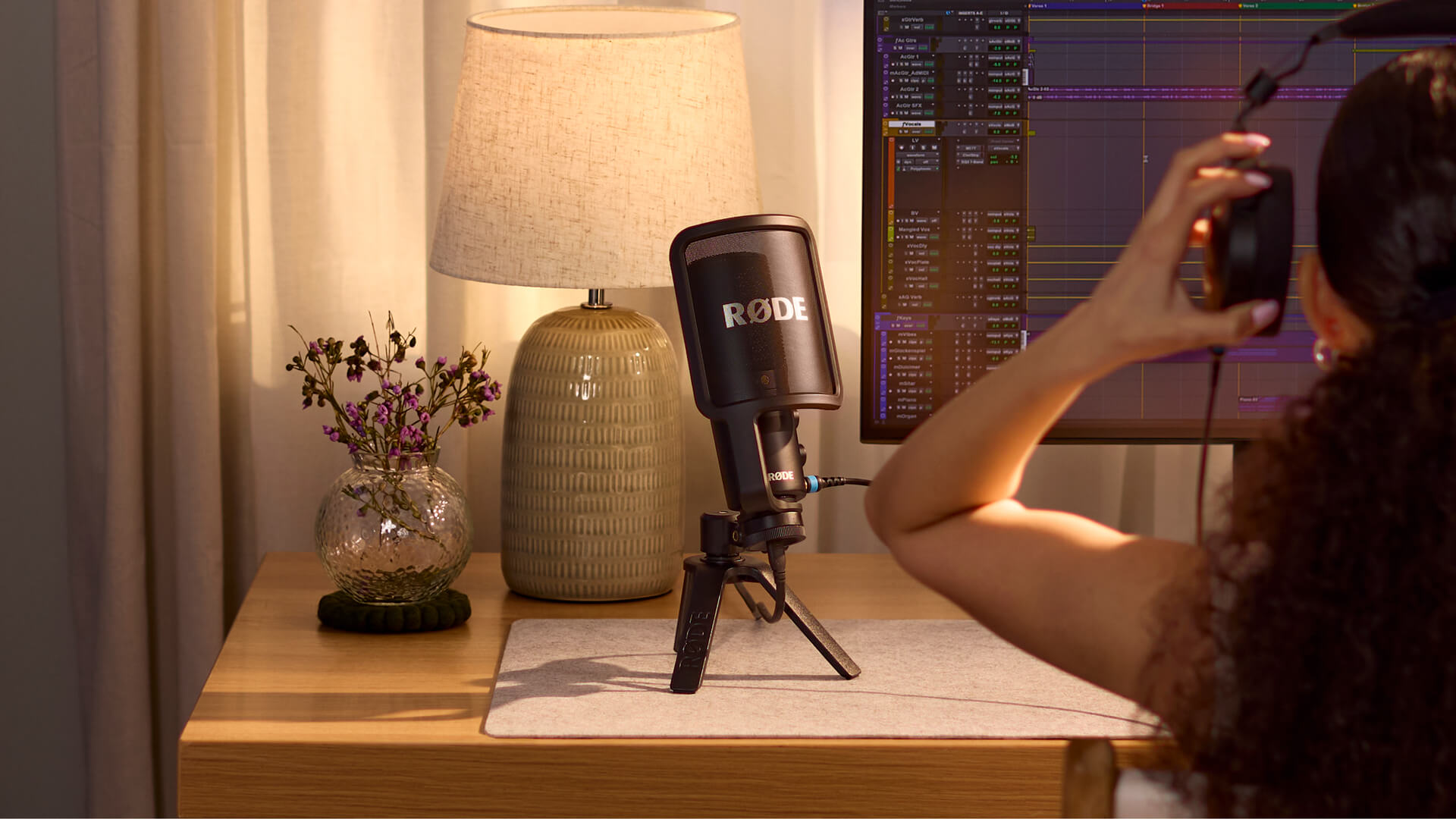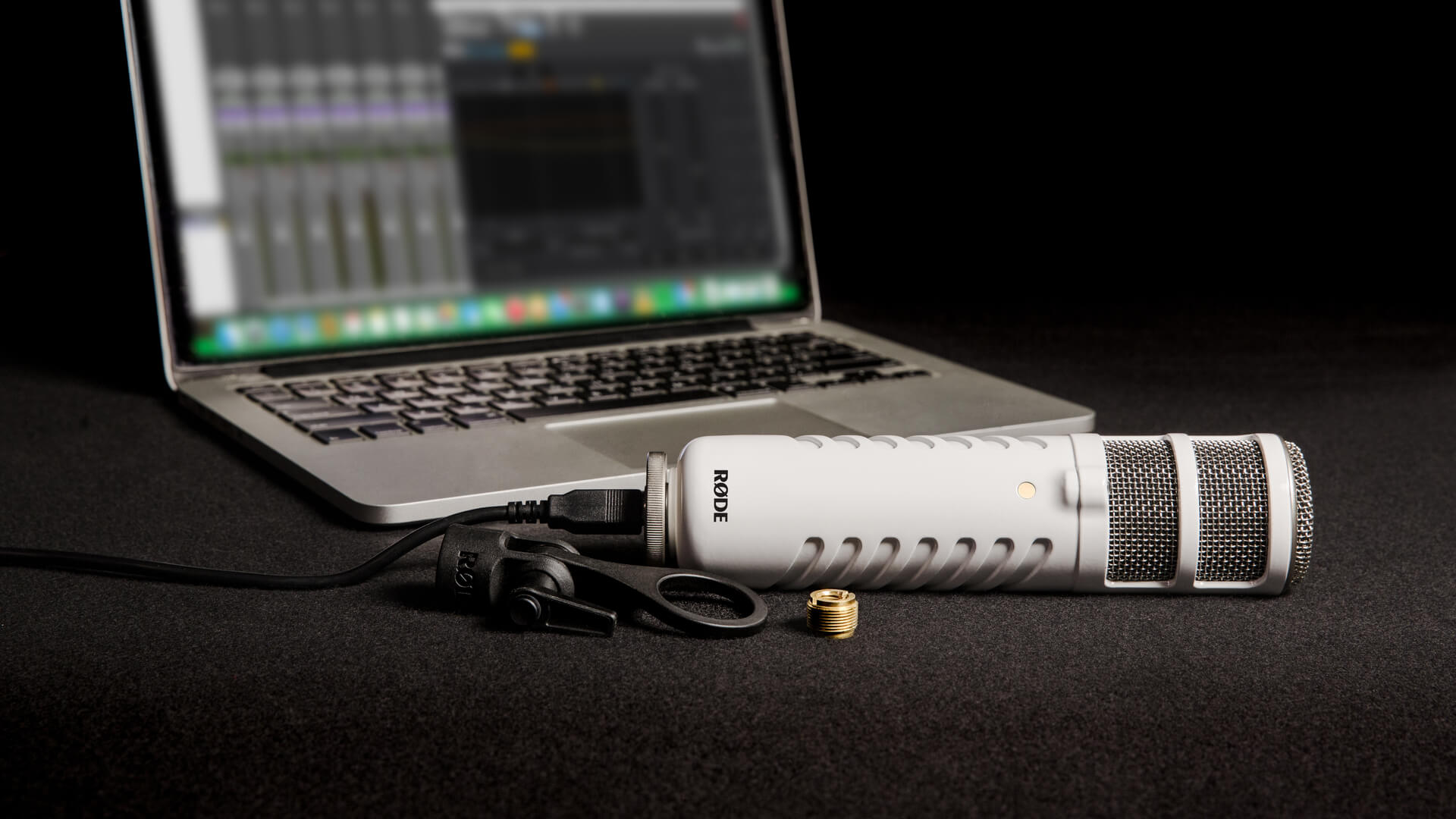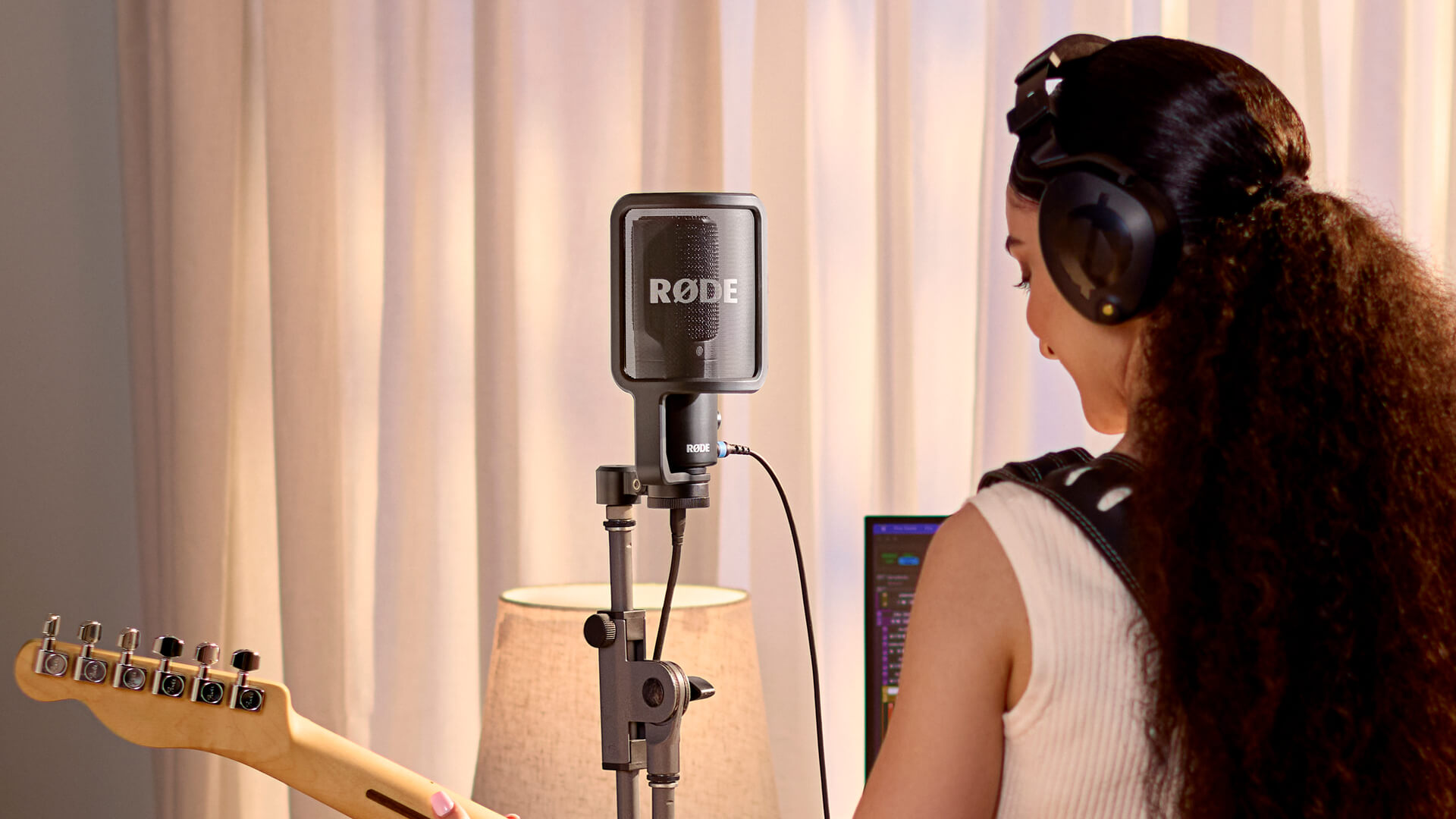VideoMic NTG
The VideoMic NTG differs from the others in the range in that it’s actually an on-camera shotgun microphone. For added recording flexibility, it features a USB output as well as a standard 3.5mm output, so you can record directly into a computer as well as a camera. This would be a good option if you are a videographer as well as a musician and need a versatile recording solution.
VideoMic GO II
Like the VideoMic NTG, the VideoMic GO II also features a universal USB output for plugging into smartphones, tablets and computers, as well as a 3.5mm TRS output for use with cameras. It's ultra-lightweight and super-compact making it an extremely versatile option for podcasting, filmmaking, gaming, livestreaming or content creation with a smartphone, tablet or computer.
Setting Up Your USB Mic
RØDE USB mics are incredibly easy to set up and use. You don’t need an audio interface to use one, like you would with an XLR microphone. Simply plug it into the USB input of your computer and it’s ready to record. These are class-compliant USB devices, meaning they do not require additional software or drivers to run.
Once you have connected your mic, you will need to select it as your input and output device on your computer. This is accessed via your system’s audio settings. Do a quick test to make sure your computer is picking up audio from your microphone – you should see the level meter moving when you talk into the mic. You also need to select the microphone as your input and output device in your recording software.
It’s recommended that you wear studio monitoring headphones like the RØDE NTH-100 so you can listen to yourself while recording and listen back to your audio after you’re done. This will also ensure that you don’t experience any feedback that can occur if you use your computer’s in-built speakers to monitor your audio. All RØDE USB mics feature a high-quality internal headphone amplifier.


